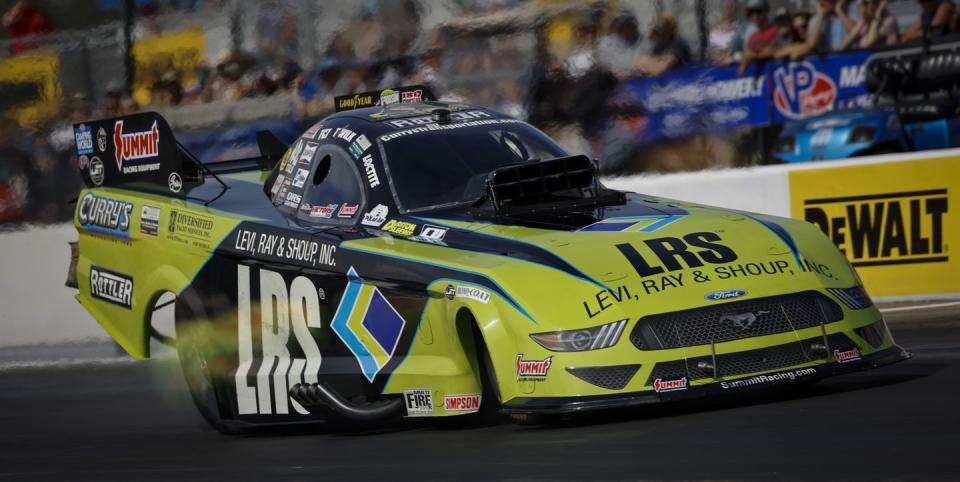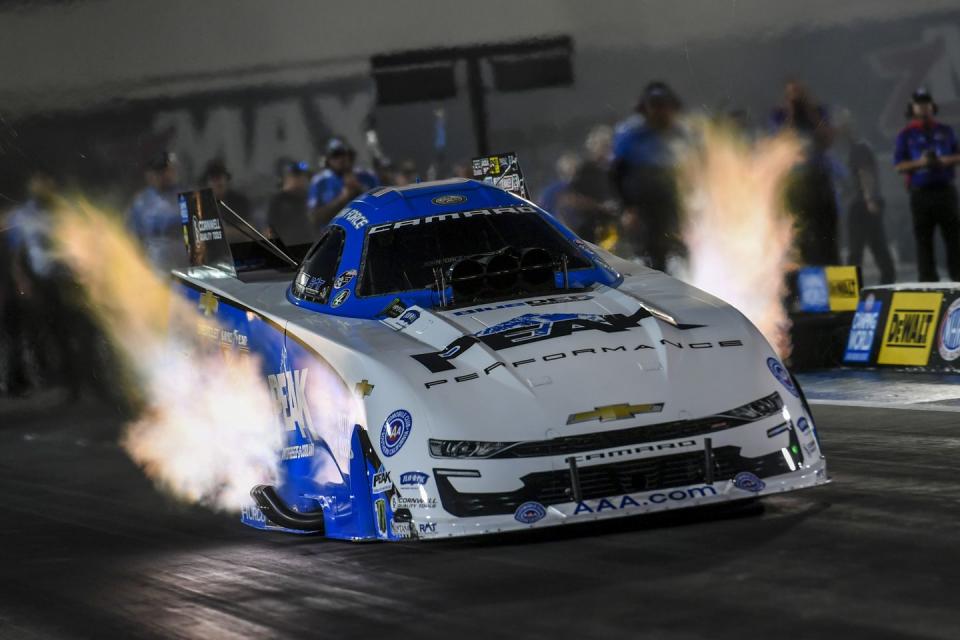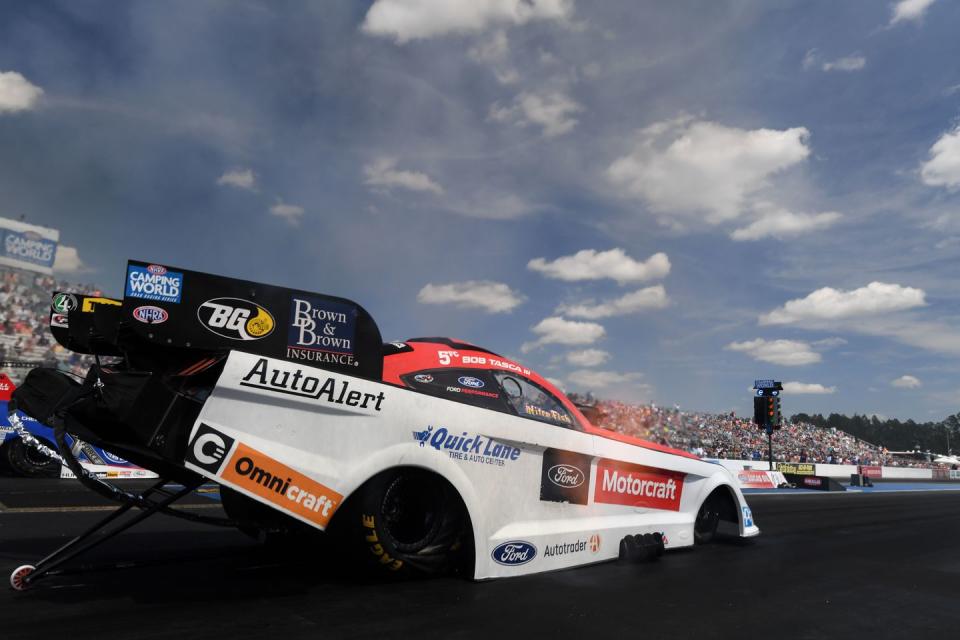NHRA Teams Not Immune to Nation's Supply Chain Concerns

Nitromethane-powered Top Fuel dragsters and Funny Cars accelerate from zero to nearly 340 mph in less than four seconds, and that places a high stress load on equipment for an astonishingly short time.
Teams, especially the smaller privateer outfits, are finding that the wait for fresh goods, parts or materials is long.
Some teams are finding that a shortage of shipping containers causes another bottleneck when it comes time to order parts.
The entire automotive industry has been disturbed by pandemic-triggered factory shutdowns and production interruptions, labor shortages, political regulations and restrictions, escalating costs of raw materials, and a host of intertwined predicaments.
So it naturally follows that today’s global supply-chain disruption has trickled down to NHRA drag racing. However, some teams seem to be in better position to ward off the effects than others as the Camping World Drag Racing Series faces its final two events of the season within a month.
Because of the structure of its competition, drag racing has a unique consumption rate for parts and pieces that keep the 11,000-horsepower engines operating safely and effectively. Nitromethane-powered race cars (Top Fuel dragsters and Funny Cars), which accelerate from zero to nearly 340 mph in less than four seconds, place a high stress load on equipment for an astonishingly short time.

This past weekend’s Top Fuel parts carnage in the cooler morning temperatures at Bristol, Tenn., during eliminations for the Thunder Valley Nationals prove that the straight-line sport has a significant demand for components. Crew chiefs can’t resist tune-ups in ideal conditions that will allow them to “swing for the fences.” The result is that sometimes those parts become shrapnel as the cars blast the length of more than three football fields in less time than it takes to read this sentence.
So the question arose whether a parts shortage might determine a Camping World Drag Racing Series championship.
Todd Okuhara, director of racing for Don Schumacher Racing (DSR) and crew chief for Top Fuel racer Leah Pruett, said he didn’t think that is likely. He indicated the boss won’t run out of material or parts anytime soon.
“Everybody’s got some issues with materials and material costs going up. I don’t think this is new. A lot of the material costs have been trending the way it is. Chad [Ossier, president of the boss’ newly minted Don Schumacher Precision Manufacturing arm of the company] and Don are staying ahead of it. We’re doing OK. So far we haven’t seen any shortages.
“We just had a bunch of block material, some raw material, come in, and we’re going to have parts. And we’re actually gearing up for next year, to finish off this year and start next year,” Okuhara said.
The status at DSR, he said, is so far so good – “as good as could be, yes.”
DSR Funny Car driver Ron Capps, his class’ points leader, said the concern arose recently that the supply-chain interruption might skew a title chase. But he said, “There didn’t seem to be a concern with the shortage of parts, specifically getting through the end of the year, with any team out there, from what I was told. So I don’t think that’s going to be an issue – I was told no, that wasn’t an issue.”
Even so, does the situation mean Countdown to the Championship contenders might start running more conservatively because they don't want to start blowing up items their trams can’t replace?

“It's always in the back of your mind,” John Boyce, car chief for Funny Car owner-driver Bob Tasca III, said. “I mean, every crew chief makes their decisions differently. If you look at the last year and a half, two years of these things, we've really not had that much parts attrition compared to years past. Knock on wood, [we’ve] been living very well, not tearing parts up. We're getting a lot more clean, consistent runs.
“Look at the racing: No. 1 to No. 16 and how tight it is in the Funny Cars, especially the top 10 cars. They're all right there. They’re all the same. You can't really understand the mindset that I'm used to being around. You don't go out there with intent to hurt your car, because it doesn't run as well when you go to do that. When you’re thousandths [of a second in elapsed time] apart from one to 10, you got to be in the top half to even be close. You can't make those decisions, at least in my mind.”
Longtime Funny Car privateer Jack Wyatt said he thinks racers will start to dial back somewhat.
“I really think so. I really do. I think we’re going to see more of that. We’re already seeing that. Guys are running their parts a little bit more [before] replacing them. I think you’re going to see more of it. I really do.”
Evidently Okuhara’s team isn’t one of them. He said, “Conserving . . . I don’t think that’s the right word. I think we’re careful.”
His theory is that a team has to buy more parts – or the case of DSR and a couple of other teams – make them. Investment in new inventory is imperative: “When it comes to the safety and performance of this car,” Okuhara said, “you’ve got to get the parts. Otherwise, you’re not going to get either. When you try to get extra runs on parts and parts fail, it costs you more. It’ll cost you way more. I don’t care whether it’s a thousand-dollar part or a five-dollar part – you put extra runs on it, it’ll cause damage.”

 Yahoo Autos
Yahoo Autos 